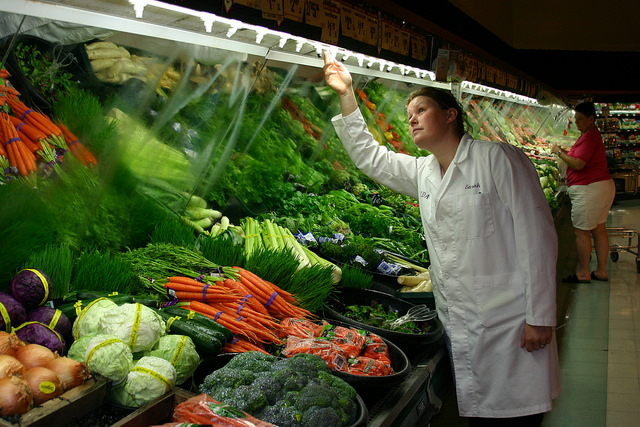
Oregon Department of Agriculture/Flickr, CC BY-NC-ND 2.0)
OTTAWA — Canadian are becoming less aware of how to safely handle and prepare food to avoid food-borne illness and food poisoning, according to government-backed research.
The findings from the report, which cost the government $126,449, point to an overall deterioration over the past eight years in Canadians’ confidence that they can protect themselves and their families from food-borne illness and food poisoning.
A majority of seniors and pregnant women in the survey didn’t consider themselves to be at any greater risk from food poisoning, even though they are.
The pollsters recommend the government gently target public awareness campaigns at those groups, among others, about how to properly handle food “without undermining the public’s confidence in agriculture or the agri-food industry, or Canada’s food safety system, which is reasonably good.”
The results of the survey are based on responses from 1,201 respondents through telephone interviews, and 1,613 people through an online panel. All work was done between Dec. 14, 2017 and Jan. 18, 2018.
A spokesman for Health Canada said the department will update its safe food handling advertising campaign based on the research report, as well as information from other sources.
The Liberals introduced new food safety rules last month, just a few weeks after the research report was delivered to Health Canada. The regulations will come into force early next year, and will require companies to keep detailed records about the path food takes from producer to consumer.
Federal officials believe that being able to trace food to its source could speed up the pace of recalls.
Consultations on the regulations are open until Sept. 7.
The survey provided to Health Canada in early May will now become the benchmark by which the government can measure the effects of public awareness efforts in the coming years, but also provide insight into how attitudes have changed since 2010.
Each year, about one in eight Canadians — or four million people — are affected by a food-borne illness like norovirus, salmonella or listeria, leading to about 11,500 hospitalizations and some 240 deaths.
Many small things can be done to avoid problems, but the survey found a broad lack of knowledge about washing reusable shopping bags, rinsing poultry before cooking, as well as properly storing, defrosting and cooking meat and seafood.
More pregnant women and parents of young children in 2018 than in 2010 defrost meat or poultry at room temperature rather than in the fridge.
And seniors are more likely to view food as safe to consume past the best-before date, aren’t aware of the proper temperature to leave a fridge — between 2 C and 4 C — and tend to believe frozen, breaded chicken products just need to be reheated rather than cooked through.
“The results of this survey also suggest an ‘out of sight … out-of-mind’ tendency among the public with regards to safe food handling in general, food-borne illness and listeria in particular,” the report says.
“In the absence of sustained messaging related to food safety, it is likely that consumer vigilance may lapse, especially with respect to specific food safety practices that have not yet become normalized or habitualized.”
If the federal government wanted to increase food safety awareness with seniors — defined in the survey as anyone 60 and over — it should focus on consequences, said Wanda Morris, vice-president of advocacy with CARP, formerly known as the Canadian Association of Retired Persons. She pointed to campaigns about falls that focus on the likelihood that not preventing them could lead seniors to live in long-term care homes.
She suggested food safety authorities should try “tying in an awareness campaign of ‘do you want to save a few pennies and risk long-term care or death’. And the bigger fear is long-term care. In my experience people are more concerned with long-term care than they are about dying.”